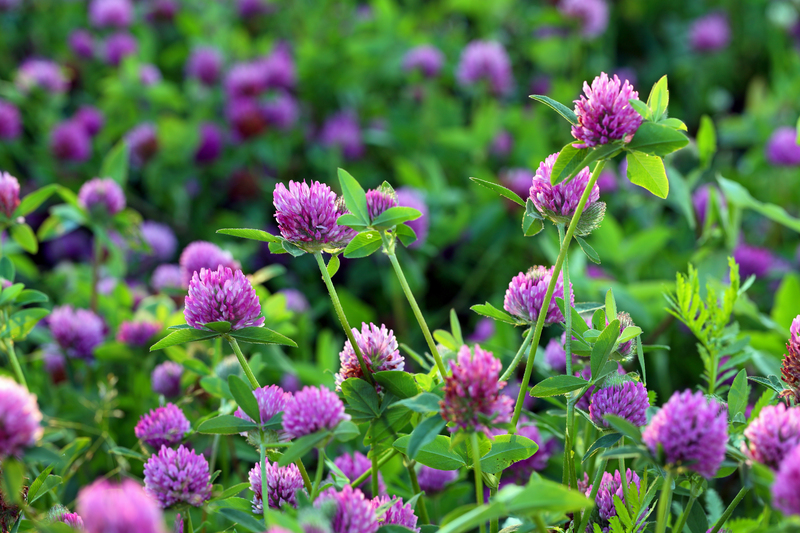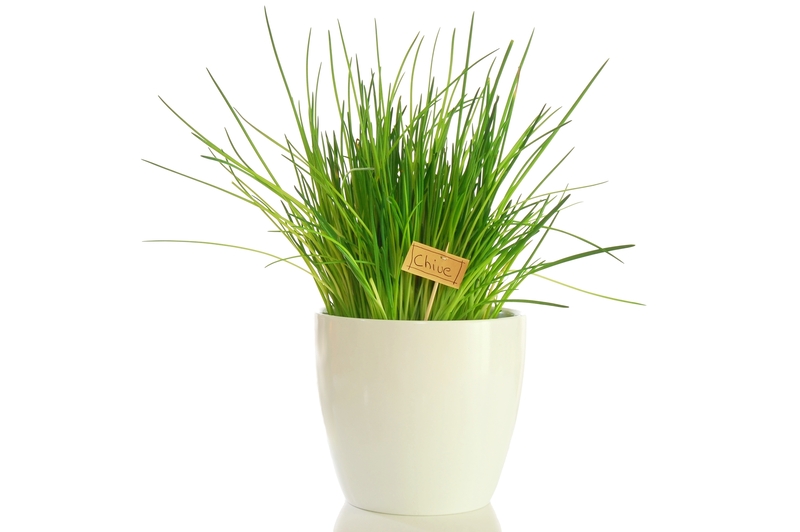Hedge Artistry: Perfect Shapes and Techniques for Every Gardener
Posted on 22/09/2025
Hedge Artistry: Perfect Shapes and Techniques for Every Gardener
_Hedges are not just functional borders or privacy screens -- they are the living sculptures of the garden world. "Hedge artistry" elevates the humble shrub into captivating features that showcase both creativity and horticultural skill. Whether you are a novice home gardener or an experienced landscaper, mastering the art of hedge shaping can transform your outdoor space into a veritable masterpiece._
What is Hedge Artistry?
Hedge artistry, sometimes called topiary art, is the practice of sculpting, pruning, and training hedges or shrubs into visually pleasing shapes, geometric forms, or even whimsical creations. While traditional garden hedges may provide structure or privacy, creative hedge shaping adds a unique aesthetic dimension to your landscape.
Benefits of Hedge Artistry
- Enhances curb appeal
- Promotes plant health through regular maintenance
- Offers privacy and noise reduction
- Creates wildlife habitats
- Makes your garden truly unique
Perfect hedge artistry isn't just for grand estates -- with the right knowledge and techniques, every gardener can achieve stunning results.
Popular Hedge Shapes: Ideas for Every Style
When it comes to hedge shapes, the possibilities are almost endless. The choice of shape can depend on your personal taste, the purpose of the hedge, and the specific plants you're using. Here are some of the most popular forms in hedge sculpture:
1. Classic Rectangular or Box Hedging
Perfect for formal gardens, these hedges have clean, straight lines and sharp corners. Rectangular hedging creates an immaculate, timeless look and is ideal for borders and pathways.
2. Rounded Domes
A rounded or domed hedge provides a soft, inviting appearance. This shape complements cottage and informal gardens beautifully, harmonizing with natural forms.
3. Spirals and Helixes
Spiral hedges add instant drama and a touch of whimsy. Often seen in topiary, spirals are created by skillful, patient pruning, gradually guiding plant growth around a central support.
4. Pyramids and Cones
Cone- or pyramid-shaped hedges are common in both traditional and modern gardens. Their sculptural silhouette draws the eye upward, adding height and an architectural element to your landscape.
5. Archways and Tunnels
Transform walkways with living archways or tunnels. This advanced hedge shaping technique requires training flexible varieties along sturdy frames, resulting in a magical, immersive experience.
6. Animal and Object Topiary
For the truly adventurous, topiary art can recreate animals, geometric shapes, or even abstract forms. These living sculptures require patience, imagination, and precise shearing.
_Choosing the perfect shape for your garden depends on your goals and the types of hedge plants you select. Understanding the basics is the first step toward mastering hedge design._
Choosing the Best Plants for Hedge Artistry
Not all plants are equally suited for hedge artistry. Selecting the right species will make your job much easier and ensure long-lasting, healthy, and beautiful results. Consider the following factors:
Key Criteria for Hedge Plants
- Dense foliage for sharp outlines
- Small leaves for intricate detail
- Good response to pruning
- Fast or moderate growth rate (depending on patience and maintenance commitment)
- Hardiness in your climate zone
Top Choices for Artistic Hedges
- Buxus sempervirens (Boxwood): The classic topiary plant, prized for its dense, evergreen foliage and tolerance for heavy pruning.
- Yew (Taxus baccata): Slow-growing and incredibly long-lived, ideal for traditional shapes and fine detail.
- Privet (Ligustrum): Vigorous and adaptable, a popular choice for all sorts of hedge shapes.
- Lonicera nitida (Shrubby Honeysuckle): Fast-growing, adaptable, and perfect for tight or intricate forms.
- Holly (Ilex): Provides year-round interest and sharp outlines, though spiky leaves may require protective gloves.
- Photinia: Glossy red-bronze new growth adds color to structure, and it responds well to shaping.
_Your plant selection is crucial for success in hedge artistry. Choose based on your desired shape, climate, and maintenance routine._

Essential Tools for Hedge Artistry
To achieve perfect hedge shapes, equip yourself with the right tools for precision and safety:
- Hedge shears: Ideal for large, straight cuts on established hedges.
- Pruning secateurs: Essential for snipping small, precise stems and tips.
- Topiary clippers: Fine blades designed for intricate shapes and detail work.
- Electric or battery-powered trimmers: Great for speed and consistency on big projects (but use with care for artistic work).
- String and stakes: Help outline shapes and maintain straight lines during cutting.
- Protective equipment: Gloves and eye protection to safeguard against thorns and debris.
_Maintaining your tools is as important as your garden maintenance. Keep blades sharp to achieve the cleanest cuts and reduce plant stress._
Techniques for Perfect Hedge Shaping
Even the most beautifully shaped hedge can lose its appeal with poor technique. Let's outline the essential hedge shaping techniques every gardener should master:
1. Establishing Your Shape: The Blueprint
Planning is everything in hedge artistry. Mark out your desired shape using string, stakes, or templates for complex topiary. Take your time to step back and review the outline from different angles before making major cuts.
2. Pruning and Trimming Frequency
- Formal hedges: Trim 2-3 times per growing season. - Informal or flowering hedges: Once a year, after flowering. - Frequent light trims are better than infrequent heavy pruning, ensuring steady growth and a polished look.
3. Cutting for Shape (and Plant Health)
- Always start with the sides, then shape the top last for symmetry.
- Hedge bases should be broader than the tops (a "batter"), promoting sunlight exposure and reducing leggy lower growth.
- Make cuts at a slight angle to prevent water from pooling and causing disease.
4. Artistic Touches and Advanced Techniques
- Use hand shears for curves and intricate designs to avoid blunt, flat spots.
- Guide growth gently with supports and regular pinching for topiary.
- For animal or object shapes, prune in regular small stages and allow time for regrowth before each refinement.
Patience, practice, and regular care are the keys to success in hedge artistry. Don't be discouraged by initial setbacks -- with every trim, your skills will grow along with your plants.
Tips for Maintaining Artistic Hedges
Creating artistic hedges is only half the story -- maintenance is crucial for retaining their beauty and health.
- Feed your plants: Apply a slow-release fertilizer in spring to support dense growth.
- Water young hedges regularly, especially during dry spells.
- Mulch at the base to conserve moisture and prevent weeds.
- Inspect for pests and diseases: Address problems early to prevent unsightly gaps or dieback.
- Sharpen tools between sessions to ensure clean, precise cuts.
_Mature hedges may require restorative pruning every few years to remove wood and stimulate new growth. With attentive care, your living sculptures will thrive for decades._
Inspiration and Creative Ideas for Hedge Artistry
Want to take your hedging skills to the next level? Here are a few creative ideas to inspire your next project:
- Mixed shapes: Alternate domes with cones or rectangles for dynamic borders.
- Color contrasts: Combine green boxwood with golden euonymus or purple berberis for eye-catching patterns.
- Living chessboards: Craft geometric sections in different heights or colors for a garden "checkerboard".
- Espaliers and screens: Train fruiting shrubs along fences for edible hedge artistry.
- Seasonal displays: Shape flowering or berrying shrubs for year-round interest.
Let your imagination guide you. From whimsical topiary figures to elegant, sweeping lines, the only limit in hedge artistry is your own creativity and patience.

Common Mistakes to Avoid in Hedge Shaping
Even the most diligent gardeners can make mistakes. Avoid these common pitfalls to ensure your hedges look their best:
- Trimming at the wrong time: Prune after the risk of frost and after flowering for blooming varieties.
- Neglecting the base: Keep lower branches wider than the top to prevent thinning out.
- Using blunt tools: Dull blades tear instead of cut, stressing plants and inviting disease.
- Over-pruning: Heavy cuts can shock plants or expose bare wood, making recovery slow.
- Ignoring overall plant health: Regular feeding and watering help plants tolerate frequent clipping.
Remember, hedge trimming artistry is a long-term endeavor. Respect the natural growth pattern of your plants while giving them form and structure.
Conclusion: The Timeless Appeal of Hedge Artistry
_Hedge artistry cannot be rushed. It is an exercise in patience, observation, and creativity. The rewards, though, are immense: lush green boundaries, fascinating shapes, privacy, and a personal artistic stamp on your outdoor oasis._
By mastering the perfect hedge shaping techniques outlined above -- from choosing the right plants to implementing advanced trimming strategies -- you can bring any landscape vision to life. Start small, stay committed, and watch as your hedges become living works of art to be enjoyed for years to come.
Ready to get started?
- Choose your favorite shape or topiary design.
- Select the best plants for your garden's climate and conditions.
- Pickup the right tools, and review key techniques.
- Begin transforming your hedges into art!
Want more inspiration? Explore online galleries or visit public topiary gardens to see masterful hedge artistry in action. Whether your style is bold and whimsical or classic and refined, the transformative power of perfect hedge shaping awaits every gardener.
Give your garden the living sculpture it deserves -- start your hedge artistry journey today!

